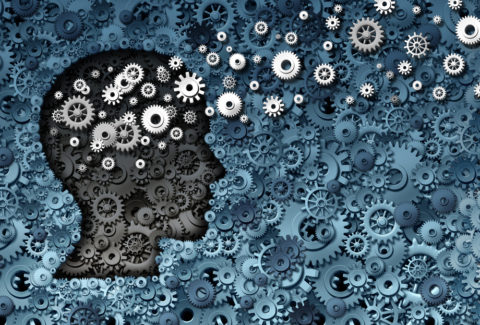Foundational Concepts of Behavior Change and Motivation

Foundational Concepts of Behavior Change and Motivation
Understanding the foundational concepts of behavior change and motivation[1] is essential for anyone seeking to facilitate meaningful transformations in individuals and organizations. These concepts provide the framework for developing effective strategies to inspire change and foster a sustainable commitment[2] to personal and professional growth. This article explores the key principles underlying behavior change and motivation, offering insights into how they can be applied in various contexts.
The Transtheoretical Model of Change
The Transtheoretical Model (TTM)[3], also known as the Stages of Change Model, is a widely recognized framework for understanding the process of behavior change. It outlines five stages that individuals typically go through when changing a behavior:
- Precontemplation: In this stage, individuals are not yet considering change. They may be unaware of the need for change or resistant to it.
- Contemplation: Individuals begin to recognize the benefits of change and start thinking about making a shift, although they may still feel ambivalent.
- Preparation: This stage involves planning for change. Individuals may take small steps or gather resources to support their efforts.
- Action: Individuals actively engage in new behaviors and implement their plans. This stage requires significant effort and commitment.
- Maintenance: In this final stage, individuals work to sustain their new behaviors and prevent relapse.
Understanding these stages can help practitioners tailor interventions to meet individuals where they are in the change process, increasing the likelihood of success.
Self-Determination Theory (SDT)
Self-Determination Theory (SDT)[4] posits that motivation is driven by the fulfillment of three basic psychological needs: autonomy, competence, and relatedness. This theory emphasizes the importance of intrinsic motivation—doing something because it is inherently rewarding rather than for external rewards.
- Autonomy: Individuals need to feel that they have control over their choices and actions. Supporting autonomy can enhance motivation and commitment to change.
- Competence: Individuals seek to feel capable and effective in their efforts. Providing opportunities for skill development and mastery can foster a sense of competence.
- Relatedness: The need for connection and support from others is crucial for motivation. Building a sense of community and encouraging social support can enhance individuals’ commitment to behavior change.
SDT highlights the importance of creating environments that nurture these psychological needs to promote intrinsic motivation and sustain behavior change.
The COM-B Model
The COM-B Model[5] is a framework for understanding behavior change that focuses on three essential components: Capability, Opportunity, and Motivation. According to this model, behavior change occurs when individuals have the capability to perform the behavior, the opportunity to engage in it, and the motivation to do so.
- Capability: Refers to an individual’s physical and psychological capacity to engage in the behavior. Interventions that enhance skills, knowledge, and confidence can improve capability.
- Opportunity: Encompasses external factors that facilitate or hinder behavior, such as access to resources, social norms, and environmental conditions. Creating supportive environments can enhance opportunity.
- Motivation: Includes both reflective processes (such as beliefs and attitudes) and automatic processes (such as emotions and impulses). Strategies that enhance motivation can be crucial for successful behavior change.
By addressing each component of the COM-B Model, practitioners can develop comprehensive interventions that support behavior change.
Behavior Change Techniques (BCTs)
Behavior Change Techniques are specific strategies or interventions designed to promote behavior change. Some commonly used BCTs include:
- Goal Setting[6]: Encouraging individuals to set specific, measurable, achievable, relevant, and time-bound (SMART) goals to enhance motivation and provide direction.
- Self-Monitoring: Helping individuals track their progress and behaviors, which can increase awareness and accountability.
- Social Support: Facilitating connections with others who can provide encouragement, accountability, and shared experiences.
- Feedback: Providing constructive feedback on progress can reinforce positive behaviors and guide further efforts.
Integrating BCTs into interventions can enhance their effectiveness and support sustained behavior change.
The Role of Mindset
Mindset[7] plays a critical role in behavior change and motivation. A growth mindset—the belief that abilities and intelligence can be developed—encourages individuals to embrace challenges, learn from failures, and persist in the face of obstacles. Conversely, a fixed mindset—the belief that abilities are static—can hinder motivation and limit potential.
Encouraging individuals to adopt a growth mindset can foster resilience and a greater willingness to engage in the behavior change process.
Conclusion
Understanding the foundational concepts of behavior change and motivation is essential for anyone looking to facilitate meaningful transformation. By applying models such as the Transtheoretical Model, Self-Determination Theory, and the COM-B Model, practitioners can develop tailored interventions that meet individuals’ needs at various stages of the change process. Furthermore, incorporating Behavior Change Techniques and fostering a growth mindset can enhance motivation and support sustained behavior change.
As we continue to explore and implement these concepts, we can empower individuals and organizations to embark on successful journeys of transformation, ultimately leading to improved well-being and quality of life.
[1] Rodgers, Wendy M., and Christina C. Loitz. “The role of motivation in behavior change: how do we encourage our clients to be active?.” ACSM’s Health & Fitness Journal 13.1 (2009): 7-12.
[2] Baca-Motes, Katie, et al. “Commitment and behavior change: Evidence from the field.” Journal of consumer research 39.5 (2013): 1070-1084.
[3] Hashemzadeh, Mozhdeh, et al. “Transtheoretical model of health behavioral change: A systematic review.” Iranian journal of nursing and midwifery research 24.2 (2019): 83-90.
[4] Ryan, Richard M., and Edward L. Deci. “Self-determination theory.” Encyclopedia of quality of life and well-being research. Cham: Springer International Publishing, 2024. 6229-6235.
[5] Willmott, Taylor Jade, Bo Pang, and Sharyn Rundle-Thiele. “Capability, opportunity, and motivation: an across contexts empirical examination of the COM-B model.” BMC Public Health 21.1 (2021): 1014.
[6] Cullen, Karen Weber, T. O. M. Baranowski, and Stella P. Smith. “Using goal setting as a strategy for dietary behavior change.” Journal of the American Dietetic Association 101.5 (2001): 562-566.
[7] Light, Timothy. “Our mindset, our behavior and our future.” Geography and Sustainability 1.2 (2020): 127-131.






